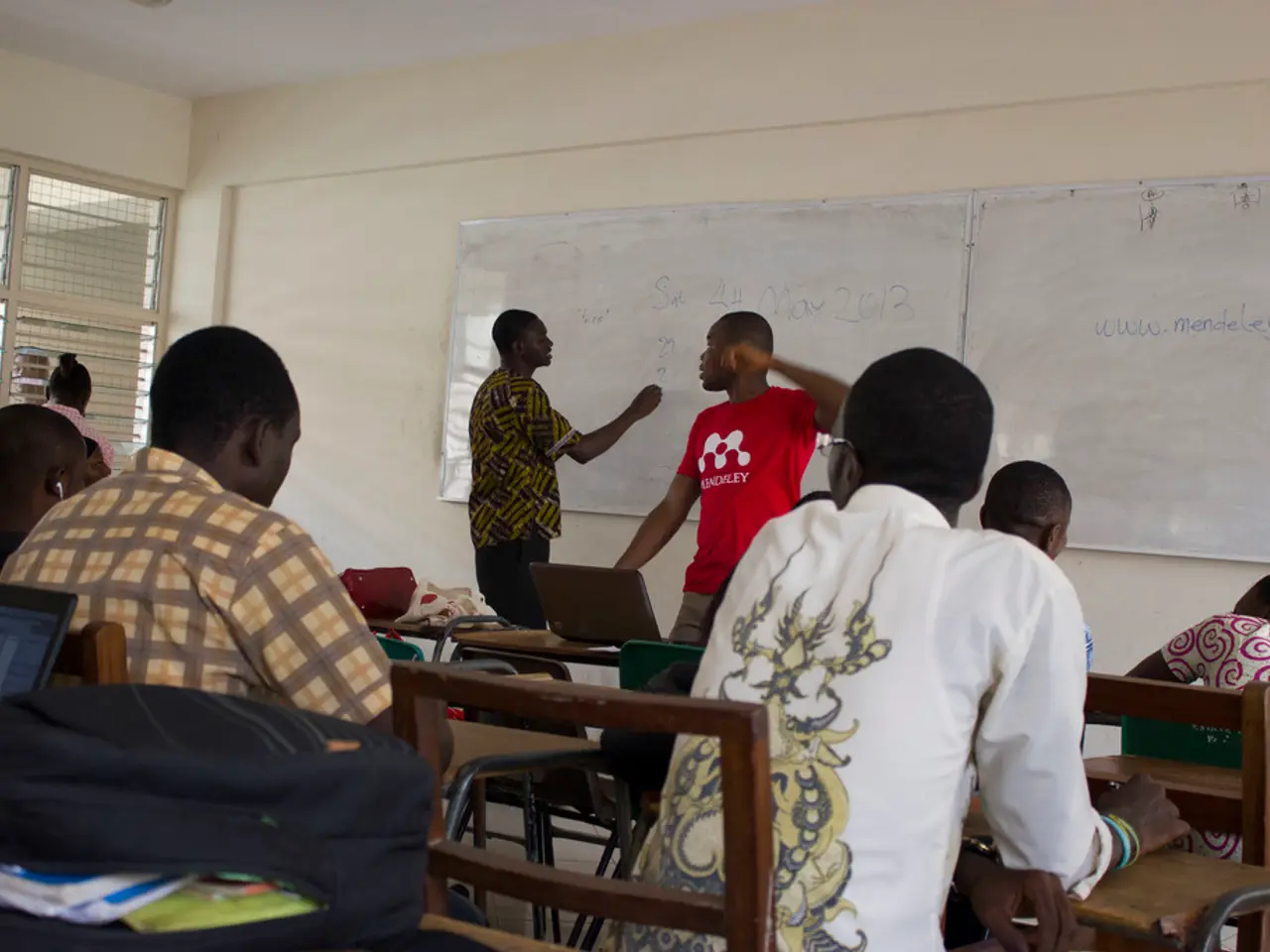Average Class Sizes at International Baccalaureate (IB) Schools: Crucial Information for Parents and Learners
In the realm of international education, the International Baccalaureate (IB) stands out as a globally respected system, known for nurturing critical thinking, cultural awareness, and academic excellence. One key aspect that sets IB apart is its relatively small class sizes, particularly in the Diploma Programme (DP) for ages 16-19.
According to a recent study specific to IB Diploma Programme classes, the average class size across different IB programs is reported to be just under 8 students per class. This indicates relatively small, focused learning groups in IB settings.
This trend is not exclusive to the Diploma Programme. Private schools, especially elite or specialized ones, tend to have smaller class sizes, often between 10-16 students, to support advanced or differentiated instruction. IB classes, often hosted in international or private schools, align with this pattern of smaller class sizes.
The data from the IB Diploma Programme suggests that IB subjects may often be smaller than typical public school classes. Differences by subject are not explicitly detailed, but specialized or higher-level IB subjects might tend to have even smaller or more focused groups due to student selection.
Location also plays a role in class size. IB programs located in international or private schools in urban or developed regions are more likely to maintain smaller class sizes, while IB classes in larger public schools or in less affluent locations might have slightly larger classes.
For comparison, average class sizes in broader U.S. public school subjects (non-IB) like elementary grades typically range from about 13 to 18 students depending on grade and subject. Private high schools known for preparing students for advanced studies frequently have class sizes from about 10 to 16.
In countries like the UK and Switzerland, IB classes tend to be smaller, often averaging 6-12 students, particularly in private institutions. Class sizes in the Primary Years Programme (PYP) for ages 3-12 typically range from 18-25 students, while those in the Middle Years Programme (MYP) for ages 11-16 typically range from 20-25.
Career-related Programme (CP) classes for ages 16-19 are often smaller, with 8-15 students. Group 6 subjects like Music, Theatre, and Visual Arts usually have smaller groups, sometimes fewer than 5 students. IB DP’s specialized subjects and rigorous projects often result in smaller group sizes, particularly for Theory of Knowledge (TOK), Extended Essays, and Group 6 subjects.
It's essential to ask about class sizes by programme and subject when evaluating IB schools. Smaller class sizes promote more interaction, discussion, and critical thinking, especially important in Theory of Knowledge (TOK). They also allow teachers to provide more attention to each student's Individual Assessment (IA) and Extended Essays.
Teachers in small IB classes often become mentors, guiding students in academics, Creative, Active, Service (CAS), and overall university preparation. Smaller class sizes often lead to stronger academic relationships, personalized feedback, and higher engagement.
However, the largest reported IB class size is 25-27 in core classes like DP English or HL Biology in public schools. It's always a good idea to check the school's website or contact their IB coordinator for precise details about class sizes.
In summary, IB classes tend to be smaller than average public school classes, providing a more focused and personalized learning environment. This is particularly true for the Diploma Programme, but class sizes can vary based on subject choice, location, and school type.
In the realm of international education, IB classes are often smaller than typical public school classes, with averages reported to be just under 8 students per class in the Diploma Programme. This trend extends to private schools, particularly elite or specialized ones, which maintain class sizes between 10-16 students to support advanced or differentiated instruction. Furthermore, IB subjects may often be smaller due to student selection and specific subject consequences, such as the Theory of Knowledge, Extended Essays, and Group 6 subjects like Music, Theatre, and Visual Arts usually having smaller groups.




